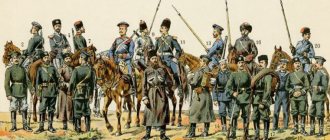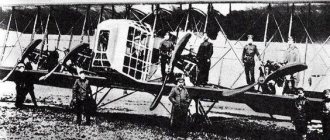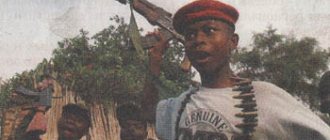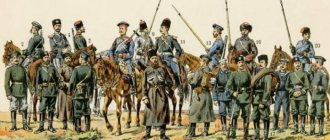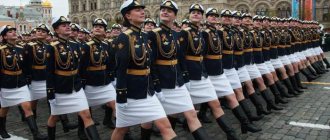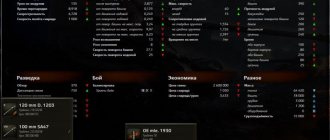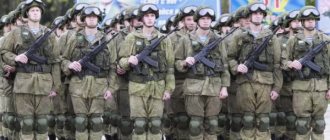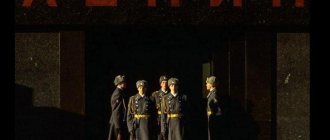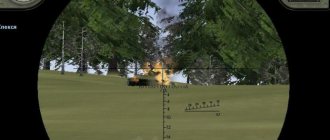There are many poems and songs written about the hussars, which over time became an integral part of army folklore for an entire era. Russian hussars, whose military exploits are covered in legends, rightfully occupy one of the leading places in the heroic chronicle of the Russian army. And although this type of light cavalry did not appear in Russia, it is difficult to imagine the Russian army today without hussar regiments. The peak of the glory of the hussar army was the Patriotic War of 1812.
Borodino
Real Hungarian hussars
We have already written about the Polish winged hussars in heavy armor.
When these armored horsemen had already become part of history, a “hussar renaissance” began throughout Europe. This time he was connected not with Poland, but with Hungary. The new hussars were much closer to the type of troops that appeared in the middle of the 15th century on the initiative of King Matthew Corvinus. Initially, the Hungarian hussars were considered light cavalry. Every twentieth Hungarian nobleman was obliged to serve in the militia, which was supported by royal taxes. Húsz means “twenty” in Magyar, ar means tax. This is where the famous name came from.
Evgeniy Bashin-Razumovsky Historical Expert
In fact, the exact origin of the term “hussar” is still unknown. There is a version that 20 horsemen is the smallest possible number of cavalry units in the Hungarian army, and the name comes from here. According to another opinion, each landholding had to maintain one hussar for every 20 taxable households.
Hungarian hussar of the 15th–16th centuries
The first hussars were armed with a saber and a shield, and also, if they could afford it, with pistols. Of course, the cavalry, created as a “people's army”, simply did not need plate armor - and it was also unaffordable.
What is a "hussar"? Meaning of the term
The term "hussar" has several meanings. The word comes from two Hungarian words “gus” - “twenty” and “ar” - “to give”. In 15th-century Hungary, hussars were lightly armed horsemen.
According to another version, hussars in Hungary were paid a military salary of 20 coins, and some philologists translate “ar” as “payment.”
The meaning of the word "hussar" in dictionaries:
- The dictionary of foreign words gives a definition: a hussar is a military man from the light cavalry, who is distinguished by reckless behavior, ostentatious daring, and daring antics.
- In the etymological dictionary: hussar comes from the Hungarian word "hussar" and means "twenty" and "pay", the translation of the term is associated with the Hungarian law, according to which one in 20 recruits had to become a hussar. There is a version that “hussar” comes from the Latin “corsair” - “robber”.
- In S.I. Ozhegov’s dictionary: a hussar is a light cavalry soldier who originally appeared in Hungary.
- In the dictionary of synonyms: synonyms for the word “hussar” are cavalryman, horseman, primate, monkey.
- In the dictionary of Ushakov D.N.: a hussar is a military man from the light cavalry, who is distinguished by a special military uniform of the Hungarian model.
Hussars in foreign service
The Poles borrowed the regular cavalry system from the Hungarians, but their hussars very quickly turned into heavy cavalry. The specifics of numerous wars with the Turks and Russians affected. But in Hungary, the hussars remained light cavalry, which existed unchanged until the 17th century. It was then that the first Hungarian mercenaries appeared in the French army. This happened under Louis XIII in 1625. But the habits of the foreign irregular cavalry were not to the liking of the French, so after a number of scandals related to discipline and looting, the Hungarian cavalry companies were disbanded in 1656.
Hungarian hussar in chain mail, 1620
The revival of the hussars was associated with the annexation of Hungary to the Habsburg possessions in 1687. Emperor Leopold reformed not only the management system of the new possession, but also the Hungarian army. Instead of the militia, regular units appeared, among which there was a place for a regiment of hussars - still light cavalry, dressed in national Magyar costumes.
But not all Hungarians agreed with the loss of freedom. Many warriors left their homeland and fled to foreign lands in the hope of finding use for their military talents. Soon, hussar units, created according to the Austrian model, appeared among the French, Bavarians and Prussians.
Where it occurs[edit]
Folklore[edit]
- It was in these troops that the character of many jokes, Lieutenant Rzhevsky, served, judging by the famous saying “hussars, madam, don’t take money!”
- The catchphrase “our hussars don’t read newspapers” is sometimes used in the sense of “a real military man is out of politics.”
Theater[edit]
- Kozma Prutkov, “Chereposlov, that is, Phrenologist” - one of the characters, Kasimov, is called a retired hussar, which is further played out in the scene of artificial stuffing of cones for subsequent phrenological interpretation: “Fate offended the hussar, and now the mlat hangs over them, and with every echo talent will fly from heaven to him..."
Literature[edit]
- “War and Peace” by L. N. Tolstoy.
- A series of stories about the adventures of Brigadier Etienne Gerard A.C. Doyle.
- “Chronicles of a Strange Kingdom” - Pomeranian Hussars. How similar they are to real hussars is an open question (for example, they wear forelocks, which real hussars did not wear), but they are one of the best warriors in the Delta, comparable in combat power to the Orthan paladin corps or the Londri archers.
- The novel by Arturo Perez-Reverte, which is called “The Hussar”. A French regiment is fighting in Spain.
Cinema[edit]
- "Hussar Ballad"
- “Say a word for the poor hussar.”
- "Squadron of Flying Hussars."
- "1864" - there are some Prussian "Black Hussars". The horror is overwhelming.
- “Ah, vaudeville. vaudeville".
TV series[edit]
- “Hussar” - Lieutenant Rylsky becomes a reverse hit, having been transferred from 1812 to our time.
Video games[edit]
- Cossacks 2 - the most dashing cavalry. He can quickly fly out of nowhere into the flank of an enemy unit and immediately unload his pistols. For an infantry squad that has already been beaten or is fighting hand-to-hand - an instant one-shot.
Real life[edit]
- Hungarian Hussars of the First Reich (Holy Roman Empire), then the Austrian Empire, then the Austro-Hungarian Empire
- Winged Hussars of the Polish-Lithuanian Commonwealth.
- The British Light Horse Brigade, famous for its suicide charge at Balaklava in 1854, included two regiments of hussars.
- Hussar cavalry of the Russian Empire during the Patriotic War of 1812
- Brunswick "Death's Head Hussars" or "Black Hussars". The Nazis set the fashion for black and silver uniforms and skulls and crossbones.
The heyday of the hussars in the 18th century
While in Poland the heavily armed hussars were living out their days as funeral teams, in the rest of Europe the light hussar cavalry was experiencing its heyday. The 18th century was a time of dominance of linear tactics - the main forces of cavalry were used either to break through the line of enemy troops - like cuirassiers; or as mobile infantry - like dragoons. It was then that the commanders discovered that the armies were decidedly lacking in light cavalry, which could be used in reconnaissance and for operations on the enemy’s flanks.
Austrian hussar, mid-18th century
The hussars became such cavalry. By the middle of the 18th century, the number of their regiments increased significantly. In 1741, there were five hussar regiments in Russia, and by the end of the reign of Catherine II there were already 12. King Frederick II of Prussia created the first two hussar regiments from among the supporters of independent Hungary who fled to Germany. By the end of the Seven Years' War their number had increased to nine.
Many peoples were considered incapable of hussar service.
The Germans and Russians were good at heavy and medium cavalry, but bad at light cavalry. So in both Prussia and Russia the first hussar regiments were recruited exclusively from Hungarian or Balkan emigrants.
Prussian hussars of the mid-18th century
However, it soon turned out that the main thing was not national character, but preparation, so the Prussian hussars caused terror on the battlefields of the Seven Years' War.
Details[edit]
Hussars as a branch of the army appeared in the 17th century and were the national Hungarian light cavalry. The first regiments were created by Poland and Austria-Hungary (Hungarians lived on the territory of these countries); later, apparently under the influence of fashion, hussars appeared in other countries, including Russia and England, where there were no Magyars (in Prussia and France The Magyars ended up as a result of the fact that before the official renaming of the Austrian Empire into the Austro-Hungarian Empire, Hungarian uprisings often broke out in it, the surviving participants of which then went to be hired in neighboring countries).
Unlike heavy cavalry (cuirassiers), hussars were not designed for frontal attacks in close formation. Their element is reconnaissance, security, pursuit, ambushes, and raids behind enemy lines. Accordingly, the hussars, more than anyone else, were required to be swift in actions and thoughts - sometimes reaching the point of recklessness.
The most striking example of hussarism is the capture of the capital of Prussia, Berlin, by a thousand Austro-Hungarian hussars under the command of Reichsgrave Andras Hadik von Futak. The commandant of Berlin, Hans Friedrich von Rochow, who had 5 thousand infantry, at the start of an unexpected assault, instead of organizing resistance, hastily retreated from the city, surrendering the capital. Significantly, a few years later he re-surrendered the capital to Russian troops under the command of Count Gottlob Kurt Heinrich von Totleben[1], who served Elizabeth Petrovna.
In peaceful life, the hussars, not accustomed to valuing either life or property, became famous as reckless drunkards, duelists and red tape. However, even in war, the noble Polish winged hussars considered it normal to knightly invite noble prisoners to their drinking party.
The position of the hussars in Prussia under Frederick the Great was interesting. It is known that almost his entire army, not excluding the linear cavalry, was kept under the most severe discipline and constant drill. This made it possible to staff the regiments with anyone - forcibly recruited, prisoners of war, etc. Any, the most crappy element, finding itself in such conditions when nothing depended on it, became quite suitable for battle: in a linear formation everything is in sight, any step to the left -to the right is punishable by the corporal's cane. This is all suitable for open battle, but you cannot send such soldiers on reconnaissance (protection, pursuit): they will run away.
Frederick felt this back during the Silesian Wars (having excellent cuirassiers, he could not conduct mounted reconnaissance!), and in addition to the line cavalry, he created the hussars. It was staffed only by volunteers, and enjoyed a certain semi-freedom in its internal life. As a result, the hussar regiments were not only above suspicion in terms of desertion, but were also used to escort their own infantry and cavalry while marching in forests, mountains, cities and other “deserter-prone” places. A kind of barrage detachments.
The downside of this “freedom” was a complete, by the standards of that time, lack of discipline. It got to the point that “normal” cavalrymen did not recognize the hussars as cavalry at all. So, the partisans are stupid. And in fact, it was pointless to demand from them suicidal attacks with their foreheads on the cannons (like the life cuirassiers at Kunersdorf), especially at first.
Subsequently, mutual influence smoothed out the difference. The line cavalry became, as they say, more conscious. Its outstanding commanders (Zieten, Seydlitz) were able to re-instill knightly traditions even among the “rabble” personnel, which made it possible, in particular, to abandon corporal punishment. And the hussars very soon realized the special relish and deadly beauty of just such hopeless attacks.
During the sepoy uprising, the British hussars accidentally ran into a column of rebels on the march and immediately attacked the Indians who were unprepared for battle, accidentally killing one of the leaders of the uprising, Lakshmi Bai. After the battle, it turned out that there were ten times more Indians, and they could have successfully repelled the attack, but the surprise factor played a role, and Lakshmi’s death was generally accidental.
Over time, technology changed and the hussars became extinct. But the very idea of light troops for reconnaissance, landing behind enemy lines, “raiding” operations, etc. has remained, so that in modern conditions the ecological niche of the hussars from the times of the Napoleonic wars is occupied by the Airborne Forces.
Differences of the Hussars
The very first hussar uniform was the usual Hungarian national costume. In the 15th century, the military uniform had not yet been invented, so soldiers went into battle in the same clothes they wore in civilian life. But Hungarian clothing was distinguished by a bright, unusual appearance: ordinary people at that time wore vests decorated with many buttons and embroidered with braid, and nobles wore caftans with a large number of gold or silver cords on the chest. The outer caftan was lined with fur.
This clothing became the prototype of the hussar uniform, well known to everyone from numerous films and historical paintings.
Starting from the 18th century and up to the First World War, the hussar uniform consisted of three main parts: a lower short jacket to the waist - a dolman; an outer jacket lined with fur - a mentik; and tight-fitting pants embroidered with braid - chakchir. The mentik was usually worn casually thrown over one shoulder, but was often used as a winter uniform - a fur jacket, although short, provided good warmth in the cold.
British Hussars, 1800
Other differences between the hussars were fur hats with high plumes and tash bags that were fastened to the belt. Remember the thoughts of the hussar Nikolai Rostov: “Natasha, sister, black eyes. On... tashka... On tashka, step on... stupid us - who? - they are talking about this element of the form, which reminded him of his sister.
Staff trumpeter of the Mariupol and private of the Life Guards Hussar regiments
The hussar's boots also had a special look. Unlike other cavalry regiments, the hussars used light shoes, incomparable to the massive boots of cuirassiers and dragoons.
Hussar costume as an element of the cult of the brave warrior
The hussar could be recognized from afar. The cavalrymen were distinguished by a brilliant uniform, a special style in appearance and behavior. The Eastern European flavor contributed to the formation of the appearance of the gallant hussar. In the military hussar uniform you can easily see the features of Serbian, Hungarian and Polish men's dress.
Guard uniform
In the Russian army, the hussar suit was considered the most prestigious uniform. No wonder the Semenovsky and Preobrazhensky Guards regiments were dressed in hussar uniforms. Since the reign of Catherine II, all Life Guards wore the ceremonial hussar uniform. The costume differed only in color and small details. Each hussar regiment had its own uniform, different from the others. The cavalrymen also had peculiarities in appearance. The hussar's mustache was a characteristic feature in the appearance of a military man, which indicated that he belonged to an elite unit. By the length and curls of the tips of the hussar's mustache, it was possible to determine which regiment the soldier was assigned to and what rank he was.
The story of the military uniform for hussar regiments in Russia has different interpretations. However, due to the fact that this type of cavalry came from central Europe, Russian cavalrymen inherited parts of Hungarian, Serbian and Polish uniforms. Traditionally, Polish and Austrian hussars wore bright uniforms with elements of Hungarian and Polish national costume and had fur-trimmed headdresses. The hussar's costume in any situation, on the battlefield or in parade formation, was distinguished by splendor and colorfulness.
The first hussar detachments wore fur hats and short sheepskin coats. Gradually, light cavalry moved away from chain mail and other protective armor. The form became more convenient and practical. At the same time, the lifestyle of the hussars made its own adjustments to the style of the military uniform. However, the main details of the military uniform, such as the dolman and mentik, remained unchanged.
These elements of the costume became mandatory and were preserved until the very last days of the existence of this type of cavalry.
The doloman was a short jacket with a stand-up collar. The short length was not chosen by chance, since the frequent presence of the rider in the saddle required more convenient and comfortable clothing. In Hungary, where the hussars came to us from, the dolman is considered the traditional uniform of a military horseman. A mentik, a short jacket - a cape trimmed with fur, was used as an element of outerwear. However, in addition to its main function, the mentik played an important role in creating the appearance of the rider. The style of wearing the mentik was also specially invented. It was worn on one sleeve and attached sideways to the dolman, creating a unique image of a brave warrior. This tradition took root in the light cavalry, becoming an integral element of wearing a military uniform.
Both the dolman and the mentik had bright small details that emphasized the formality of the military costume. On the chest the dolman was embroidered with 15 laced loops. For officers, the loops were gold or silver in color; for the rank and file of hussar regiments, the loops were made from ordinary silk cord of a yellowish or silver color. Buttons occupied a special place on the chest. The officers wore gilded buttons on the dolman and mentik. Soldiers' uniforms were equipped with copper fittings. He turned off the loops on the dolman with galloon, which on the officer’s uniform was golden in color. The mentic was trimmed and decorated in the same way.
Hussars in battle
The typical tactics of the hussars are either reconnaissance, or flying squads behind enemy lines, or rapid attacks on the flank of an enemy position. An example of such combat use of light cavalry is the battle on the Katzbach River, when hostilities with Napoleonic France resumed in 1813.
Bonaparte gathered a new army and began to inflict very unpleasant blows on the allies. On August 26, when Napoleon's main forces defeated the Russian-Austrian army near Dresden, the combined army of Russians and Prussians under the command of Blucher met with the army of Marshal MacDonald in Silesia.
"Battle of Katzbach" by Eduard Kaempffer
Determined as always (received by the soldiers as “Field Marshal Forward”), Blücher ordered an attack on the French units that had crossed the Katzbach. But the onslaught of the Prussian cavalry was choked by the stubborn resistance of the French. Then the French were attacked by Russian units under the command of General Fabian Osten-Sacken, and the Akhtyrsky and Belorussian hussar regiments of Lieutenant General Sergei Lansky suddenly attacked the flank. The maneuver of the Cossacks, who went to the rear, completed the defeat of the enemy, who was literally overthrown by the combined attack and fled.
What the first hussars looked like
Initially, the hussars did not resemble those whose appearances are familiar to us from 19th-century paintings and modern films. The hussars wore thin forged metal chain mail and light helmets with chainmail headbands on their heads. In winter, they wore jackets - mentia, which they wore in other seasons on the left shoulder. Eagle or hawk wings were attached to them to protect the left hand, which held the reins, from saber strikes.
In the 16th century, the spread of hussarism went in two directions. The first was German. Austrian subjects, the hussars, were engaged in guarding the Turkish-Austrian border. The second is Polish. The Transylvanian prince Stefan Batory was elected krul (king) in 1576. With his coming, the hussars also came to the Polish-Lithuanian Commonwealth.
During the turmoil that came after the death of Boris Godunov during the time of False Dmitry, hussars appeared on the territory of Rus'. They were in the army of Jan Sapieha, who besieged the Trinity-Sergius Lavra during the “Seven Boyars”. They were with Hetman Khodkevich, who was trying to capture Moscow. However, they no longer had anything in common with the first Hungarian hussars.
Hussars in Russia
The oldest hussar regiment in the Russian army is Akhtyrsky. It was created back in 1651. But for the sake of fairness, it must be said that at that time in Russia, if they talked about hussars, it was only as heavy cavalry of the Polish model. Therefore, the Akhtyrtsy were originally an ordinary Cossack regiment. In 1765, during the military reforms, the Akhtyrsky regiment became a hussar regiment and since then has earned itself the name of one of the most famous military units of the Russian army.
The constant distinguishing feature of the Akhtyr people was their brown uniform with gold cords. The uniform of this particular regiment was worn by the famous hussar and poet Denis Davydov.
Chief officer of the Akhtyrsky Hussar Regiment
Another regiment whose name is remembered to this day is the Alexandria regiment, known under the unofficial name “Black Hussars”. Their regimental song is “March forward, the trumpet is calling, black hussars”! It is often performed these days - all lovers of military history know it well.
The Alexandrians have been counting their seniority since 1776, and their ancient sign was a black Maltese cross with a death's head superimposed on it.
The Guards Hussars appeared in Russia under Catherine II - at first only as the empress's horse guard, and already under Paul I they became a full-fledged guard regiment.
Hussar units still exist in the armies of some states. For example, the French have four hussar regiments in their army, which serve as armored cavalry (that is, tank forces), while the British have Her Majesty's Royal Hussars, which are also considered a tank unit.
British Royal Hussars. Instead of horses - Challenger 2 tanks
And although today's hussars no longer wear the brilliant uniform of their ancestors, their glorious name reminds us of the battles and victories of the past.
LiveInternetLiveInternet
Early Russian hussar formations (XVII century)
In Russia, the hussars were mentioned as an army of the “New (foreign) system” in 1634.
In 1654, when the air clearly smelled of gunpowder and blood of the upcoming war with the Polish-Lithuanian Commonwealth, the first hussar regiment of heavy cavalry was formed in Moscow in the image and likeness of the Polish “winged hussars,” which was headed by Colonel Kh.F. Rylsky. The Russian hussars, led by a colonel in 1654, wore wings. Russian hussar armor from the 17th century has been preserved in the Armory. Russian hussars could also be equipped with Reitar armor. This, for example, was what Prince Khovansky did in 1661, when he did not have time to receive hussar armor.
In September 1660, in the troops of the Novgorod category under the command of Prince I.A. Khovansky began the formation of the second combat-ready strike unit of the “hussar formation”. These companies performed admirably in the battles of the Russian-Polish War and in August 1661 they were deployed into a regiment, which received “hussar shafts” (spears) and armor from the Armory. Gordon's diary speaks of three companies of hussars participating in the Kozhukhov campaign of 1694. The last mention of the hussars of this organization was in 1701, when the hussars were abolished and drafted into the Novgorod Dragoon Regiment.
Peter's era - new attempts to create hussar units
A few years after the abolition, an attempt is made to resurrect the hussar formations. At the behest of the monarch, the Serb Apostle Kinich gathered three hundred glorious grunts from his compatriots and Moldovans, skilled in military affairs, into a certain hussar team called the Wallachian Horongvia. In 1711, with the beginning of the Russian-Turkish War, there were already 8 such formations in Russia. But after the failure of the Prut campaign, they were disbanded, leaving only three teams of 500 people, called the regiments of Apostle Kichich, Vasily Tansky and Serbin.
After the Peace of Nishtat in 1721, the last hussar regiments, which were of little use in the Swedish War, were also abolished. The main reasons for the disbandment of the hussars were the high cost of their maintenance, the mercenary nature of the formation and, as a consequence, indifference to the interests of the state, as well as riots, indiscipline and unrest.
In 1723, when the sovereign ordered Major Ivan Albanezov to form (by hunting) hussar regiments from Serbs - immigrants from Austria, preserving for them the salary that they received in Austria.
Under Peter the Great, many Serbs came to Russia. They settled in Ukraine - in the south of the Russian Empire. Since these Serbs had many horses and were excellent riders, the sovereign ordered the formation of a hussar regiment from them. By the beginning of 1825, the strength of the regiment was about 400 people, however, their number gradually decreased, and by the time of the death of Peter I, only 94 hussars remained in the detachment.
Post-Petrine era
After Peter the Great - under Empress Anna Ioannovna, several regiments were formed from immigrants (Slavs, Hungarians, Vlachs, Georgians). These formations were an irregular border army.
| Hussar of the Sloboda Hussar Regiment (1756-61) |
Under Empress Anna Leopoldovna, all hussar units were transformed into 5 settled hussar regiments (Serbian, Georgian, Moldavian, Wallachian and Hungarian).
Each hussar received an allotment of land and a stable, although not very generous salary (39 rubles) for the purchase of a horse (it cost half the annual salary), weapons, special ammunition and other property according to the register, which also cost a pretty penny since it was purchased exclusively abroad, because it was not produced in its own country of decent quality. So we can say with confidence: in those years they clearly had no time for carousing with card games, champagne and beauties.
Under Tsarina Elizabeth Petrovna in 1751, Colonel Horvat, a native of Austria, was entrusted with forming one hussar regiment of 4 thousand sabers from the Serbs, which was settled on the right bank of the Dnieper (in the so-called New Serbia). In 1752, two more similar regiments were formed, and to protect the new settlement, the fortification of St. Elizabeth (Elizavetgrad).
From time to time they had to participate in minor border skirmishes, in which they, as a rule, gained the upper hand. However, in the very first major field battle at Gross-Jägersdorf in August 1757, the Serbian and Hungarian regiments, who did not really smell gunpowder, came face to face with the powerful Prussian cavalry, superior to them both in number and skill, and after a pathetic attempt to provide little resistance, they turned their horses around and spurred them on. But in the course of further, not so large-scale, essentially semi-partisan military operations on the territory of Prussia, where the hussars fought shoulder to shoulder with Cossack units, in most cases fortune clearly favored them.
In 1754, the Serbs Rajko Preradovich and Ivan Šević with a significant number of their fellow tribesmen entered Russian service; They were instructed to settle between Bakhmut and Lugansk (Slavic-Serbia) and form 2 hussar regiments of 1 thousand people each, which in 1764 were united into one - the Bakhmut Hussar Regiment. The formation of hussar regiments continued until 1762.
The Seven Years' War (1756 - 1763) convincingly demonstrated the effectiveness and, therefore, the expediency of using well-trained and fully equipped light cavalry in battles. And therefore the next step of the military department seemed quite natural: the Akhtyrsky, Izyumsky, Ostrogozhsky, Sumy and Kharkov hussar regiments were created.
So, in 1762, the year of Empress Catherine II’s accession to the throne, there were already twelve hussar regiments, and they all settled in the south of Russia (in Ukraine and Little Russia).
In 1764, a special “Charter of Hussars, or Short Rules for Light Troops” was issued, regulating the actions of units, mainly in the guard and reconnaissance services.
| Hussars of the Akhtyrsky Regiment, 1810. |
As a result of the reforms of Count Potemkin, carried out in 1783 - 1786, all settled regiments were abolished and took their place in the regular army, receiving the name light cavalry and uniforms similar to other branches of the military. The exception was the ranks of the Life Hussar Battalion (133 people) who performed guard duty in the palace.
Foundation of the Life Hussars Squadron
In 1775, on March 21, Empress Catherine II ordered Major Shterich to form a Life Hussar squadron for his convoy, choosing for this the best people and horses from the 12 Hussar regiments that then existed in the south of Russia. In the same year, Major Shterich presented the detachment he had formed to the Empress in Moscow and was appointed commander of this squadron.
From Moscow, the life hussars were transferred to St. Petersburg, where they stood throughout the reign of Empress Catherine; On special occasions and outside the city, she never traveled except accompanied by a platoon of the Life Hussar Squadron.
In 1796, Sovereign Emperor Paul I, upon his accession to the throne, ordered the formation of a four-squadron regiment from the Life Hussar squadron, the commander of which was appointed Lieutenant Colonel Kologrivov. At the same time, the Emperor transferred the regiment to the cities of Tsarskoe Selo and Pavlovsk, and ordered the first squadron to be called the squadron of His Majesty.
19th century hussars
In 1788, the establishment of hussar regiments began once again - the Olviopol and Voronezh light horse regiments were again renamed hussars. Three squadrons of the Voronezh regiment took part in the battles in the famous assault on the Izmail fortress. Suvorov highly noted the courage of these warriors and among them A.P. Melissino. It was he who was entrusted with the formation of the Lubny Hussar Regiment in 1807. With this regiment he fought the French and died near Dresden in 1813.
Further battles, and especially the Patriotic War of 1812, greatly increased the glory of the hussars. For example, the famous Akhtyrsky regiment, part of the corps of General Raevsky, courageously and steadfastly repelled all attacks of the French cavalrymen. And, of course, the hussars - six regiments! - participated in the Battle of Borodino, heroically fighting the enemy. Three won hundreds! Only the dead did not rise from the ground” - this is Marina Tsvetaeva. Agree, you couldn’t say it better. It is no coincidence that at that time in the army environment a phrase was passed from mouth to mouth, the author of which is unknown for certain: “A real hussar never lives to be 35 years old.”
After the reorganization of the cavalry on December 17, 1812, all hussar regiments were consolidated into three hussar divisions:
1st Hussars Division
- Grodno Hussar Regiment
- Elisavetgrad Hussar Regiment
- Izyum Hussar Regiment
- Sumy Hussar Regiment
2nd Hussars Division
- Alexandria Hussars Regiment
- Akhtyrsky Hussar Regiment
- Irkutsk Hussar Regiment
- Mariupol Hussar Regiment
3rd Hussars Division
- Belarusian Hussar Regiment
- Lubny Hussar Regiment
- Olviopol Hussar Regiment
- Pavlograd Hussar Regiment
After the victory over Bonaparte, Russia did not participate in wars “suitable” for demonstrating the combat capabilities of the hussars. No, the guns on various fronts were still roaring, and the infantry was rising with bayonets against the enemy, but there was no wide field of activity for the light cavalry - there was not enough space.
Thus, in the Crimean War (1853 - 1856), the enemy was armed with modern rifled weapons - not the most favorable factor for the use of cavalry. Only two of the sixteen hussar regiments - Kiev and Ingria - were thrown against the enemy in the battle of Balaklava in the fall of 1854, but, unfortunately, they were not successful. But he accompanied the hussars of the Mariupol and Kyiv regiments in the next Russian-Turkish war of 1877-1878 during the blockade of Plevna, and the Life Guards of the Hussar and Grodno regiments - when crossing the Balkans (in winter!).
Decline of the Hussar era
After the accession of Alexander III to the royal throne, all 14 hussar regiments fell under the millstone, it is difficult to say which ones, reforms: they were converted into dragoons with the same names. But it was not a dot, but rather an ellipsis, because 25 years later Phoenix was reborn again: during the First World War, there were 20 hussar regiments in the Russian army! It is noteworthy that in this campaign, as part of the Akhtyrsky Regiment, Vladimir and Alexander Lermontov fought with the enemy - siblings, descendants of the great Russian poet, who were subsequently separated by the October Revolution on opposite sides of the barricades. Alexander was evacuated along with the remnants of his unit to a foreign land, and Vladimir transferred to the 1st Cavalry Army of S.M. Budyonny.
In the spring of 1918, after the official general demobilization of the old army, the remaining hussar formations were abolished.
It is curious, but true: after the revolution, several regiments of the Red Hussars were formed, which especially distinguished themselves in the summer of 1919 in battles with Admiral Kolchak. And this is third. But those were completely different hussars and a completely different, less colorful and shorter story.
Sources:
“Hussars of Elizaveta Petrovna” 1741-1762. P. F. Kosmolinsky
oko-planet.su
“A Brief History of His Majesty’s Life Guards Hussar Regiment” Compiled by Captain Benckendorf St. Petersburg 1880.
